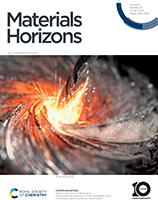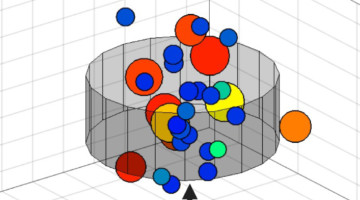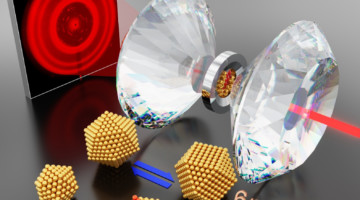Researchers used in situ x-ray diffraction to develop a direct, more energy-efficient, and cheaper way to extract lithium from its source mineral, spodumene. The approach not only promises to reduce energy consumption and processing costs but also supports the sustainable scaling of lithium production to meet growing market needs. Read more »![]()
Mechanism of an Economical Way to Produce Al–Ce Alloy
A time-resolved diffraction study conducted at the ALS revealed mechanistic insight into a multi-step chemical reaction for the economical production of aluminum–cerium alloy, a high-performance material with superior temperature stability. The results provide crucial information for the application of the method on an industrial scale. Read more »![]()
Superhard Materials at the Nanoscale: Smaller is Better
In the superhard material, rhenium diboride, smaller grain size leads to greater yield strength (i.e., the amount of stress tolerated before permanent deformation). Because such transition-metal borides are extremely hard, metallic, and can be synthesized at ambient pressure, they have exciting potential for use in next-generation cutting tools. Read more »![]()
![]()
Aluminothermic reduction of CeO2: Mechanism of an economical route to aluminum–cerium alloys
In this study, we demonstrate a novel approach to producing Al–Ce alloys by reducing CeO2 in liquid aluminum at 95% reduction efficiency. This work provides the basis of an economic route to producing high-strength Al–Ce alloys with enhanced dispersion strengthening from embedded Al2O3 particles. Read more »
Under Pressure, Gold Nanoclusters Reveal Structure-Property Relationship
Metal nanoclusters have unusual optical properties that are of interest for fundamental reasons as well as for applications like diagnostic imaging and 3D printing. To better understand how nanocluster structure relates to optical properties, researchers performed high-pressure diffraction studies on single crystals of gold nanoclusters. Read more »
Hybrid Semiconductors Perform Under Pressure
Researchers found that compressing hybrid (organic–inorganic) semiconductors significantly boosts their conductivity. The work demonstrates a novel doping mechanism in which the material’s organic molecules serve as charge reservoirs for tuning charge-carrier concentration, with promising applications in solar cells, lasers, and LEDs. Read more »![]()
![]()
Hardening Effects in Superhard Transition-Metal Borides
Novel superhard materials with exciting potential for applications in cutting tools and abrasives can be designed by combining incompressible transition metals with boron to create phases like WB4, pictured here. Diamond-cell-based high-pressure radial diffraction enables the direct study of lattice specific mechanisms for hardening. Read more »
Atomic-Scale Insights into Nickel Exsolution on LaNiO3 Catalysts via In Situ Electron Microscopy
In situ electron microscopy provides atomic-scale insight into the dynamic structure evolution of LaNiO3 perovskite during vacuum heating. This research established a sequential two-step process in the decomposition of LaNiO3 and gives evidence of the diffusion pathway for the lattice oxygen released during the perovskite decomposition. Read more »
Mineral Microstructures Shed Light on Planet-Scale Dynamics
To explore what happens to minerals under the extreme conditions in Earth’s mantle, researchers developed an x-ray technique that bridges the gap between methods that reveal bulk properties and those that focus on individual crystals. Use of the technique has shed light on the dynamics of tectonic-plate subduction in Earth’s lower mantle. Read more »
Stress-Induced Structural Transformations in Gold Nanocrystals
Metallic nanocrystals are widely used in catalysis, electronics, photonics, and sensing applications, but our understanding of their stability under operational stresses is limited. These studies of gold nanocrystals at high pressures found that large-scale structural transformation is possible and must be considered at the nanoscale. Read more »









